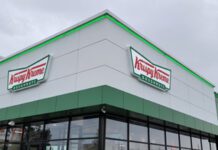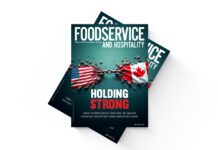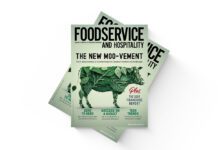By Morag McKenzie
Every foodservice operation relies on the food supply chain to source and supply everything from raw ingredients to prepared food, paper and cleaning products. Due to transportation interruptions, labour shortages, closed borders and business shutdowns, the pandemic brought chaos to the chain, leading to shortages in almost every product category.
However, with the pandemic generally declared over, has the supply chain been restored? Can operators again count on it to provide consistent, diverse and best available products at prices which both operators and consumers deem to be reasonable?
The answer it seems is…depends on who you ask.
The Supply Chain Today
After more than three years of significant shortages, there is some good news in the Canadian food supply chain. Restaurants Canada, the national, not-for-profit association representing Canada’s diverse foodservice industry, reports that most operators across the country can now rely on their suppliers to provide most of the products they require to operate their business.
“Approximately 33 per cent of operators still have supply challenges (as of July 2023), a significant improvement from 79 per cent in September 2022,” explains Kelly Higginson, president and CEO, Restaurants Canada, adding, “coming out of the pandemic, supply and demand moved at different rates and in different ways both across Canada and around the world. For example, in Canada, a shortage of agricultural workers led to difficulty in getting produce to market. Other parts of the world remained in lockdown for a significantly longer period of time, for example in Thailand, which resulted in difficulty in getting fisherman back into boats.”
Other global upheavals have also led to significant disruptions, including the war in Ukraine and climate change. Post pandemic, the industry around the world had to re-build, and re-build at the same time as they were all experiencing the same problems — a shortage of workers and re-opening of delivery systems. Higginson adds, “It is a testament to the resilience and determination of people that supply re-opened as quickly as it did as it is a very interdependent and complex process.”
David Hopkins, president of Toronto-based hospitality-management and consulting agency, The Fifteen Group, explains, “There is a huge time lag between restaurants needing supplies and where the process starts. For example, farmed ingredients start a year or more to begin growing the ingredients restaurants require. During COVID, none of those were needed. However, now demand has come flooding back. Supply and demand will catch up but it will take time. The supply chain is like a multi-car tractor-trailer truck going around a steep bend. The engine has righted itself, but the last trailers are still swaying to keep up.”
Keeping Nimble
Chefs across Canada are well known for their creativity and resourcefulness. In recent years, these talents have become even more critical as they adapt to changing market, pricing and supply conditions. “Chefs are becoming even more nimble and creative, using different ingredients, cuts and types of meat, fish or other protein to manage supply or pricing challenges,” says Higginson.
While independents are generally able to adapt menus more quickly, small and mid-sized chains are also pivoting.
The Firkin Group of Pubs, which has grown from one pub in 1987 to more than 20 locations across the Greater Toronto and Halifax areas, has used a number of different strategies to combat price increases and item availability. “We use a combination of strategies, including single ingredient substitutions (i.e. romaine to kale in side salad), upscaling (adding unique toppings to a veggie burger while also increasing the price), creative combinations (chicken wings and popcorn shrimp) or replacing the entire item (chicken burger),” explains Dave Godfrey, Culinary director for Firkin Group.
Price and Profit
One of the most significant results of the pandemic and supplier shortages has been rising prices. This has been felt by all sectors of the foodservice industry and in most product categories.
For independents, this has been particularly difficult. Prime-Seven-Nine, an independently owned restaurant in Collingwood, Ont. has successfully navigated product shortages, rising prices and the need to adapt menu items to remain open and profitable. Sylvain Beaulieu, owner and general manager, says being located in a small, rural town with a loyal customer base means “in the last year we have had a few options. We could substitute a different product/menu item and train all our staff to understand and sell that menu option. Or, we could find a comparable product, which we have generally done as we have many repeat customers who we do not want to disappoint. Full seats, and an outstanding guest experience are most important to us.”
To effectively manage supplier price increases, and remain profitable, Hopkins recommends operators look at maintaining profit margin, not food-cost percentage. “Having a consistent price and profitability strategy is critical for a restaurant. If a product’s cost increases by $5, then increase the menu price by $5 — not to a level to only maintain a food-cost percentage. If you use food-cost percentage as your target, your menu item may be overpriced and you risk losing your customer.”
And while all would agree that the price of food has increased significantly, operators also acknowledge there is a ceiling to menu-price increases. “We cannot penalize customers for a short-term price increase and keep on meeting customer needs and expectations. We target costing our menus for a 12-month basis versus month-month, as want to ensure we are authentic,” explains Beaulieu.
Technology and Price Comparisons
The increasing use of technology in restaurants has also allowed restaurants to be more price-nimble. QR-code menus are just one example of this. “When chicken wings went up $1/lb., we could change the price at all our pubs within two hours,” explains Godfrey.
Competitive price checking across multiple suppliers has now become necessary for many operators. “I have changed suppliers three times in the last year for some products as the size, price and quality can vary widely,” explains Beaulieu.
Inventory-management software also allows operators to better manage their costs. “I now check pricing from three suppliers versus one. It’s more time-consuming for managers, but there is a lot of fluctuation in pricing. The greater intelligence from my software allows me to track prices and re-design my menu to incorporate less-volatile items,” states Court Desautels, CEO of The Neighbourhood Group, a chain of five restaurants in the Guelph-Kitchener-Waterloo, Ont. area.
Streamlining Product Offerings
Just as many restaurants are simplifying their menus to increase operating efficiency, so are major food manufacturers. “Many of our major suppliers, including Maple Leaf Foods and Kraft-Heinz, have streamlined their product offerings, stopping production of some of our most-popular ingredients and menu offerings,” says Godfrey. “It’s been difficult to find substitute products of a similar quality and price. We have again adapted our menu however, some operators and customers do not understand why their favourite soup or appetizer is no longer available.”
Independent restaurants are in the same boat. “We’re not sure why our suppliers are no longer carrying certain products as we know supply is very complicated. But we’re still impacted and need to react,” agrees Beaulieu.
Future Outlook
The future looks bright as distributors and restaurants work together to find creative ways to contain costs and maintain a healthy and diverse supply chain. Dan LaFrance, president and CEO of Flanagan Foodservices states, “Our biggest challenges are the same as restaurants — inflation and a decline in out-of-home food consumption. We are working with our customers and suppliers to find creative ways to offset each as we know we cannot continue to pass on costs and sustain and grow our business.”
Food manufacturers are also innovating, creating new lower-cost and plant-based products, which are also adapting to changing customer preferences. “We see some great new food offerings such as V’DGZ Corn R’bz (corn-on-the-cob ribs) and V’DGZ Brussel Sprouts, both of which are popular and on trend,” says Dave Godfrey, Culinary director for Firkin Group.
Time, traceability and transparency will also be key to restoring and maintaining a strong supply chain, which both operators and customers can trust. A recent (Oct. 2023) $5.2 million Canadian settlement of an alleged Atlantic salmon price-fixing scheme illustrates how price can be driven up when neither of these exist. The settlement will be split over large volume purchasers during the specified period. FH


















